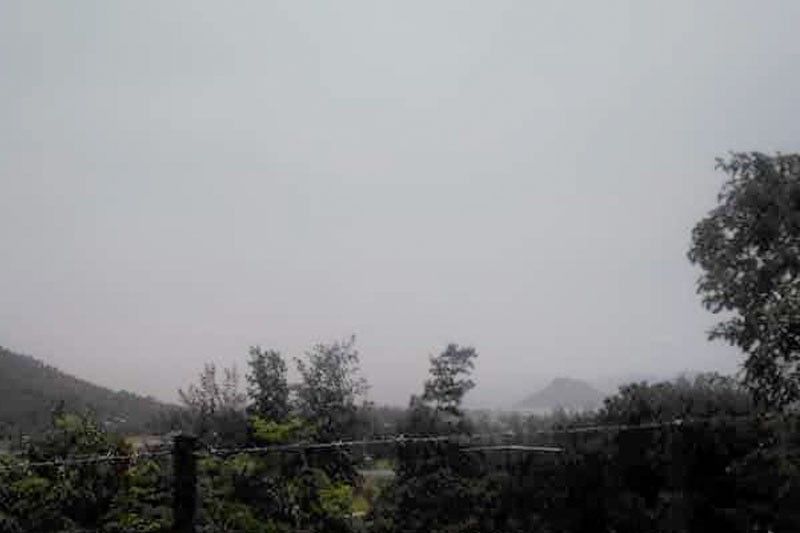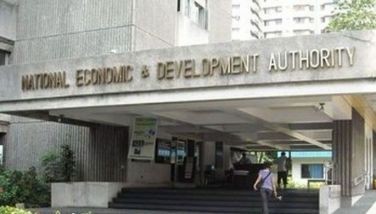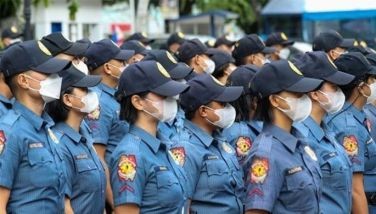Phivolcs: Pinatubo not acting up

CLARK, Pampanga, Philippines — Even with reports of irregular smoke and ash emissions, Mt. Pinatubo is not acting up, the Philippine Institute of Volcanology and Seismology (Phivolcs) clarified yesterday.
“Our latest monitoring showed there were no signs of volcanic unrest. Ash and smoke from Pinatubo volcano reported by residents after the magnitude 6.1 earthquake
were dust clouds caused by rockslides, based on the field observation of the DOST (Department of Science and Technology)-Phivolcs,” it said in a volcano advisory.
It also said “no changes in the monitored parameters were detected to indicate volcanic unrest.”
A Phivolcs team conducting fieldwork at the crater of Mount Pinatubo said it did not observe smoke coming out of the volcano before, during and after the recent earthquakes experienced in Luzon, Visayas and Mindanao. It also explained that what the residents saw as ash and smoke were actually dust caused by the rockslides following the quake and aftershocks.
Some reports said certain areas were covered in darkness because of the ash fall, leading to speculations that this had something to do with the recent powerful earthquake that struck central part of Luzon Monday afternoon, with Castillejos, Zambales as the epicenter.
“There are observations of emission of unusual smoke coming from Pinatubo Volcano and/or immediate vicinities and poor to zero visibilities from ‘ash fall’ reported to DOST-Phivolcs by concerned citizens of Barangay Santa Fe, San Marcelino and Sitios Yangil and Banawen, San Felipe in the province of Zambales,” Phivolcs noted.
Similar reports came from Pamapanga’s barangay Nabuclod in Floridablanca and Barangays Inararo and Camias in Porac.
“The reported steaming and other related observations are dust clouds generated by rockslides, which were subsequently blown by the wind. These rockslides resulted from the strong ground shaking produced by the magnitude 6.1 earthquake and succeeding aftershocks… The generation of dust clouds was verified by Phivolcs Quick Response Team who went to Sitio Pasbul, Barangay Camias, Porac, Pampanga on April 24, 2019,” Phivolcs said.?
It also debunked the so-called “earthquake weather” where hot temperatures supposedly trigger strong tremors.
“The hot air temperature only heats up the surface of the ground. The origin of earthquakes are too deep to be affected by extreme weather conditions,” said Arturo Daag, Phivolcs chief science research specialist, who stressed that there is no relation between weather and earthquake.
Monday’s Luzon tremor, measured at magnitude 6.1, was triggered by a movement of a “blind fault” or previously undetected fault in Zambales while the one in the Visayas last Tuesday was due to a subduction activity in the Philippine Trench.
Both incidents, as well as Wednesday’s jolt that hit Davao Oriental and Davao Occidental provinces, were not related, Daag said.
“These are different and separate fault systems. It doesn’t mean that when one fault moves, it will trigger the movement of others because they have their own stored and pent up energy,” he explained.
Phivolcs executive director Renato Solidum also allayed fears that the end of the world is coming as he explained that these are mere coincidence and that there is nothing to worry about.
He explained that the Philippines is prone to a lot of earthquakes because of the presence of numerous active faults in the country, which records 20 minor shakes every day.
“We record 20 earthquakes every day although these are not given much attention because these are weak. It is the stronger ones that get reported. Those (recent) quakes are just coincidence,” Solidum told reporters on the sidelines of the “Megacities at Risk: Engineering Resilience to Seismic Hazards” forum in Makati City.
Despite the recent jolts, Solidum said the public has nothing to worry about as he urged everyone to always be prepared because no one can predict the occurrence of an earthquake.
Central Luzon and Metro Manila experienced a magnitude 6.1 earthquake on Monday while Eastern Samar had a magnitude 6.5 earthquake on Tuesday. Davao Oriental and Davao Occidental had magnitudes 4.7 and 4.5, respectively, on Wednesday.
The Phivolcs chief said a lot of people have followed the right procedure as far as evacuation is concerned.
“So, it is important to train some more. Before every earthquake drill, the dangers, the behavior of the building and that of every individual have to be explained,” he added.
In his presentation, Solidum said the estimated number of casualties if a 7.2 magnitude earthquake from a West Valley fault hits Metro Manila, is about 34,714. Around 17,782 would suffer very serious injuries.
But he stressed that this estimate could decrease if local government units conduct massive structural audits in all buildings in the metropolis and nearby provinces and depopulate the metropolis by opening more investments and opportunities outside Metro Manila.
To ensure continuity in the delivery of basic services after earthquake, he also proposed the creation of a national center based outside Metro Manila.
Phivolcs also allayed fears of those living near Mount Pinatubo that the volcano was activated by the quakes.
It advised the public to visit its official website www.phivolcs.dost.gov.ph and Facebook page for more information.
- Latest
- Trending



























